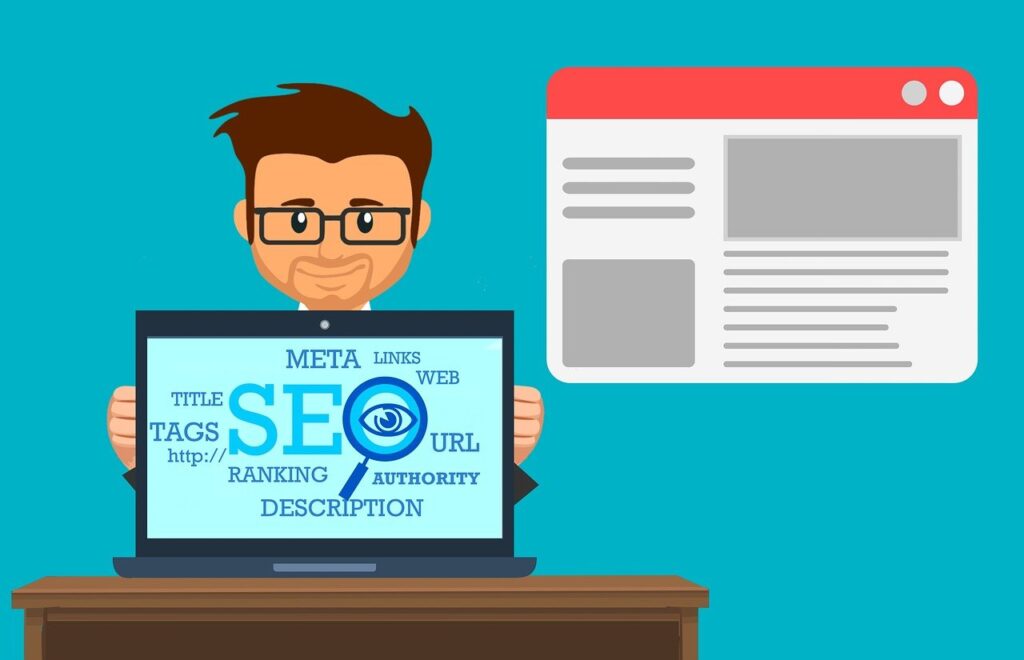In today’s digital landscape, ranking your website on Google is essential for success. Whether you’re running a personal blog, a business website, or an e-commerce store, improving your site’s visibility on Google can significantly impact traffic, conversions, and revenue. But with Google’s constantly evolving algorithms, it can be a challenge to stay on top of the best SEO practices.
This article will explore some key strategies for improving your website’s Google rankings, focusing on how to make your site more search engine-friendly, user-centric, and ultimately more visible. By following these actionable steps, you can optimize your website to meet Google’s criteria for ranking.
1. Start with High-Quality Content
Google’s ultimate goal is to serve the most relevant, high-quality content to its users. That’s why it’s critical that your website provides value. Whether you’re offering products, services, or information, your content must address your audience’s needs.
Focus on creating content that is:
- Informative: Your articles, blog posts, or landing pages should offer clear, helpful information.
- Engaging: Keep readers interested with well-structured content that’s easy to read.
- Unique: Avoid duplicating content from other sources; originality is key.
- Comprehensive: Cover topics in-depth, answering the most common questions related to your niche.
Google uses content as a ranking factor. The more helpful and relevant your content is, the higher your chances of ranking for targeted keywords.
2. Optimize Your Website for Mobile
With mobile devices accounting for over half of all global web traffic, optimizing your site for mobile users is essential for Google rankings. Google uses mobile-first indexing, meaning it prioritizes the mobile version of your site over the desktop version for ranking purposes.
To ensure your website is mobile-friendly:
- Use responsive design to make sure your site adapts to any screen size.
- Test your site on different mobile devices to ensure it loads properly.
- Make sure buttons and links are easy to tap and navigate.
A mobile-friendly site not only boosts your rankings but also improves user experience, which is an important factor for retaining visitors.
3. Improve Site Speed
Site speed is another ranking factor that can’t be ignored. Slow-loading websites have higher bounce rates, meaning users leave before engaging with your content. Google rewards fast-loading websites, especially when it comes to search rankings.
To optimize your website speed:
- Compress images to reduce file sizes without sacrificing quality.
- Minimize code by removing unnecessary HTML, CSS, and JavaScript.
- Enable browser caching so repeat visitors don’t have to reload every element of your website.
- Use a Content Delivery Network (CDN) to speed up loading times for global audiences.
If your website is sluggish, it could hurt your SEO and push visitors away.
4. On-Page SEO: Optimize Your Meta Tags
Meta tags are a small but vital part of on-page SEO. These tags help search engines understand your content and determine how to rank it. Key meta tags include:
- Title Tag: This is the title of your page that appears in search results. It should be clear, concise, and include your target keyword.
- Meta Description: This snippet appears below the title in search results and should summarize your page’s content. Include your main keyword and a compelling call-to-action.
- Alt Text for images: Search engines can’t read images, but they can read the text you associate with them. Use descriptive, keyword-rich alt text to improve your chances of ranking in image search.
Don’t neglect these small but important elements—they can improve both your rankings and the user experience on your website.
5. Build Backlinks
Backlinks, or inbound links, are one of the most important ranking factors in Google’s algorithm. When high-quality websites link to your content, it signals to Google that your site is trustworthy and authoritative.
To build quality backlinks:
- Guest Post: Write high-quality articles for other blogs and include a link to your site.
- Influencer Outreach: Connect with influencers in your industry and ask them to share your content.
- Content Marketing: Create shareable content like infographics, case studies, or guides that naturally attract links.
- Engage in Forums and Communities: Participate in online communities related to your niche and include links to your website when appropriate.
Remember, it’s not just about quantity; quality is key. Focus on earning backlinks from reputable websites within your niche.
6. Use Structured Data (Schema Markup)
Schema markup is a form of microdata that you can add to your website to help search engines understand your content. It helps display rich snippets in search results, like star ratings, reviews, event dates, and more.
Adding schema markup can enhance your search visibility and potentially improve your click-through rate (CTR) from search results. Some popular types of schema markup include:
- Article: For blog posts or news articles.
- Product: For e-commerce product pages.
- Local Business: For local SEO purposes.
- Recipe: For food-related content.
This markup won’t directly impact your ranking, but it can help your site stand out in search results and attract more clicks.
7. Regularly Update Your Content
Google loves fresh content. Websites that regularly update their pages with new information are more likely to rank higher, especially for competitive keywords.
Regular updates can involve:
- Adding new sections to existing content.
- Updating statistics or figures to keep information relevant.
- Writing follow-up blog posts or creating updated versions of your content.
By maintaining fresh, up-to-date content, you show Google that your website is active and valuable to visitors.
8. Optimize for Local Search
If you have a local business, local SEO is crucial. Optimizing your website for local searches can help you rank higher for searches that include location-based keywords.
Some local SEO strategies include:
- Creating a Google My Business profile.
- Using location-based keywords in your content.
- Encouraging customer reviews on Google and other platforms.
- Building local backlinks from directories and local media.
Local SEO can help you stand out in your community and attract relevant customers.
9. Leverage the Power of Social Media
While social media signals are not a direct ranking factor, they can indirectly impact your website’s SEO. When your content is shared on social platforms, it can lead to increased traffic, engagement, and backlinks.
Promote your content on social media channels like Facebook, Twitter, Instagram, and LinkedIn. The more your content is shared, the higher the likelihood of attracting quality backlinks and increased traffic to your site.
Take the First Step Toward SEO Success
Ranking your website on Google doesn’t happen overnight. It takes time, effort, and ongoing optimization. By following these SEO best practices, you can start improving your website’s performance, boosting your rankings, and attracting more visitors.
To get ahead of the competition and improve your website’s overall performance, consider using tools that can help streamline your SEO efforts. For example, solutions like RankNinja offer a range of features to help with website optimization, content analysis, and security. By leveraging the right tools, you can take your SEO efforts to the next level and increase your chances of ranking higher on Google.
Start implementing these strategies today, and watch your website climb the search results!
For a more comprehensive solution to your website’s SEO, check out this link to RankNinja to explore how it can help enhance your online presence.







